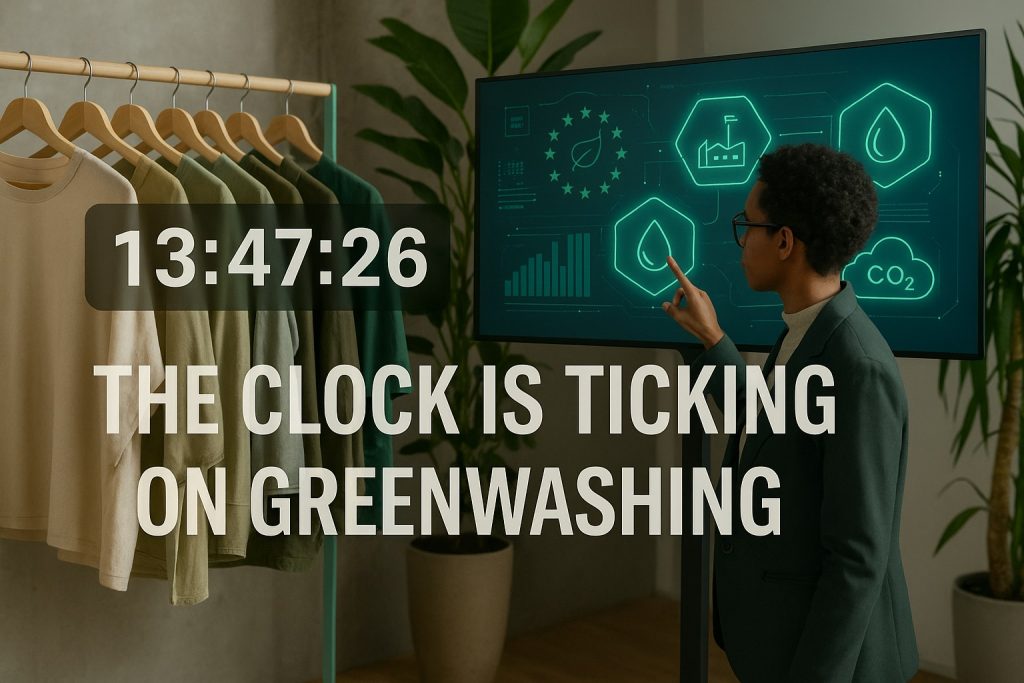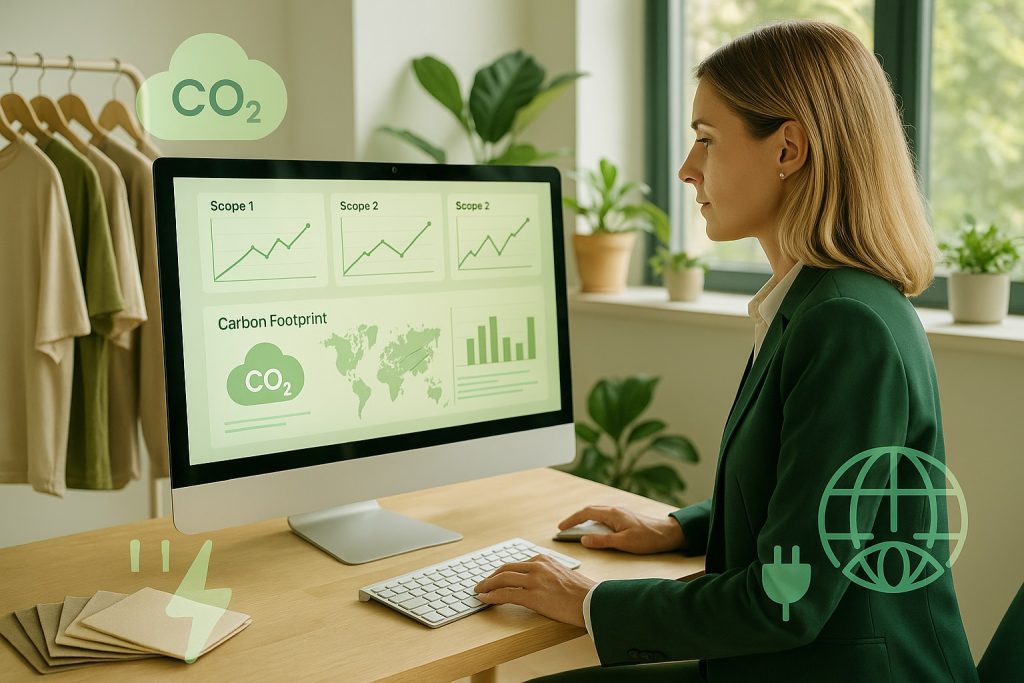Carbon Claims Are No Longer Enough—You Need Carbon Proof.
As the EU tightens sustainability regulations across the fashion industry, the bar for environmental transparency is rising fast. The Product Environmental Footprint Category Rules (PEFCR v3.1) and the upcoming Ecodesign for Sustainable Products Regulation (ESPR) demand more than general claims—they require measurable, stage-specific carbon data.
A generic “sustainable” label won’t cut it anymore.
What matters now is this: Can you quantify your emissions from fiber to factory floor—stage by stage?
🔍 The Carbon Story of a T-Shirt: What the Data Reveals
Recent lifecycle analysis of a 170g cotton t-shirt (aligned with PEFCR) shows:
| Manufacturing Stage | kg CO₂e Emitted | % of Total Impact (3.10 kg CO₂e) |
|---|---|---|
| Knitting | 1.189 | 38% |
| Cotton Fiber Production | 0.691 | 22% |
| Spinning | 0.674 | 22% |
| Dyeing | 0.407 | 13% |
| All Other Stages | 0.139 | 5% |
More than 80% of the product’s carbon footprint happens before the first stitch.
🇪🇺 Why the EU Cares—and Why You Should Too
The EU’s PEFCR for apparel and footwear (April 2025) makes it clear:
- Brands must measure environmental impacts at each life cycle stage.
- Primary data is mandatory for key processes like fiber production, knitting, and dyeing.
- Only companies with traceable, auditable carbon data will be allowed to make public claims or participate in future Digital Product Passport systems under the ESPR.
Failing to report granular data? That’s a regulatory red flag.
🧩 The Measurement Challenge
Fashion supply chains are fragmented, often spanning dozens of countries and suppliers. Getting emissions data from spinning mills in Bangladesh or dye houses in Turkey? Not easy.
But without this data, your brand can’t:
- Prove climate claims
- Comply with EU standards
- Identify high-impact reduction opportunities
✅ How FairlyGreen.io Solves This—Step by Step
FairlyGreen.io was built to make carbon measurement and mitigation scalable, verifiable, and easy, even in complex supply chains.
Here’s how:
1. Process-Level Carbon Tracking
Break down carbon footprint by:
- Fiber type and source
- Yarn spinning method
- Knitting/weaving technique
- Dyeing and finishing process
Our platform maps emissions at each production stage using primary data or validated defaults per EF 3.1 standards.
2. Supplier Collaboration Tools
Send automated data requests to:
- Spinners
- Knitters
- Dye houses
- Cut-and-sew factories
We collect, validate, and integrate emissions data from your supply chain partners—no spreadsheets, no chaos.
3. EU-Aligned Reporting
Our tools:
- Use the official PEFCR v3.1 methodology
- Pull from the European Commission’s EF database
- Output results formatted for Digital Product Passports and ESG reporting
You get carbon metrics that are compliant, consistent, and credible.
4. Carbon Hotspot Identification
Visual dashboards show you where your emissions are highest—whether it’s in the fiber, the yarn, or the dye. Then, we guide you toward low-impact alternatives.
🌱 Why It Pays to Get This Right
✅ Comply with EU laws like PEFCR and ESPR
✅ Reduce Scope 3 emissions across product lines
✅ Increase trust with consumers and retailers
✅ Build future-ready products with data-powered design
Ready to Track Emissions Stage by Stage?
Most carbon happens long before a product hits the store. Let’s start where it matters—on the factory floor.
FairlyGreen.io gives you the tools to measure, reduce, and lead.
FairlyGreen.io helps fashion brands and suppliers take control of their carbon story—one manufacturing stage at a time.


